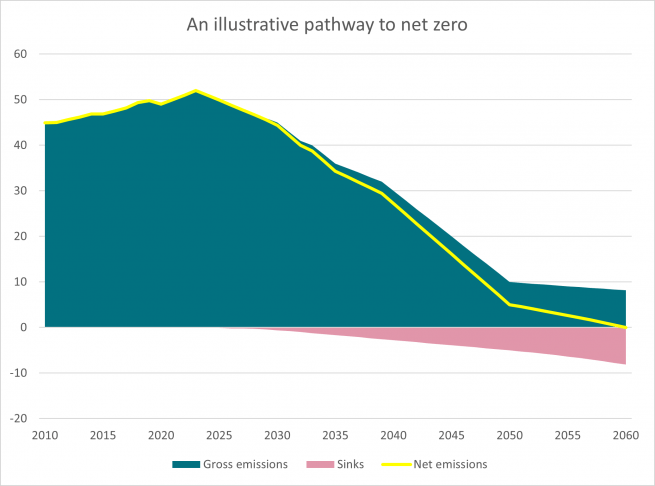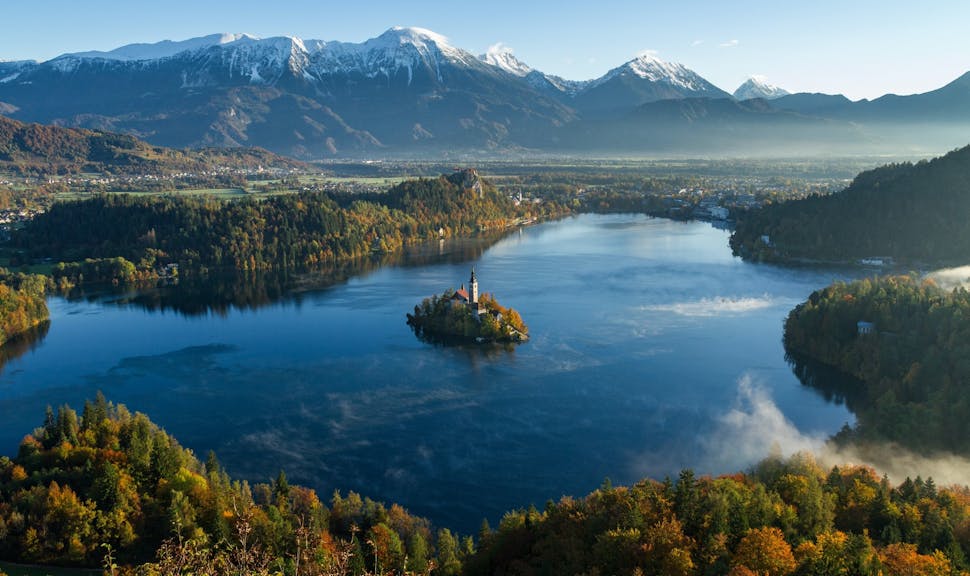

Olivier EugèneHead of Climate Research, AXA IM
September 9, 2022
Climate change: The relationship between net zero and rising global temperatures
The temperature pathways are the possible roads we can travel to reach net zero. Just finishing this trip will be quite an achievement and should not be taken for granted. The road that will be travelled depends on choices made today. It will be a bumpy ride, no matter what, and the lower the desired temperature the bumpier it will be.
5 minutes
Original Content: AXA IM
- Rising greenhouse gas emissions, the main cause of global warming, are a result of human activities
- Carbon neutrality, or ‘net zero’ can only be achieved when greenhouse gas concentration in the atmosphere stops increasing
- Depending on the path we take to get to net zero, the planet’s final temperature could be 1.5°C, 2°C or as much as than 3°C above the levels seen in pre-industrial times
Reports from the Intergovernmental Panel on Climate Change (IPCC) – the United Nations (UN) body responsible for assessing climate change science – can be complex, but they do provide state-of-the-art analysis.
In its study, Climate Change 2021: The Physical Science Basis, it could not have been clearer on the root cause of global warming, asserting it is unequivocal that human influence has warmed the atmosphere, ocean and land
.
It also added that there is a near-linear relationship between cumulative anthropogenic CO₂ emissions and the global warming they cause
.1
In other words, climate change is the consequence of the rising concentration of greenhouse gases (GHG) in the atmosphere. Human activities are the cause of this and are therefore responsible for the earth’s higher temperatures.
Climate change is widely acknowledged as the greatest risk facing the planet and given the extreme weather events witnessed over recent years, urgent action is clearly required.
The UN warned that to avert the worst impacts of climate change and preserve a liveable planet, the global temperature increase needs to be limited to 1.5°C above pre-industrial levels. Currently the Earth is already about 1.1°C warmer than it was in the late 1800s, and emissions continue to rise.
2
Therefore, to stop global warming and limit the increase in temperature, we – human civilisation – must stop pumping carbon dioxide (CO₂) and other harmful gases, into the air.
When it comes to tackling climate change the term ‘net zero’ and the action of limiting the global temperature rise – two related but separate topics – are frequently discussed; below we examine both.
The path to net zero
In IPCC language, net zero is when anthropogenic (i.e. man-made) emissions are balanced by anthropogenic removals. This applies to all emissions, with CO₂ as the primary source, but other gases, including methane, are also included.3
In simpler words, it means there are no net additions of GHGs in the atmosphere and the concentration does not increase anymore. This is shown by the yellow line in Figure 1. No net additions of GHG will also stop temperatures rising, albeit with a lag.

(Source: World Resource Institute, AXA IM)
Practically, this means that we must dramatically reduce our use of fossil fuels, transform our industrial processes, and plug GHG leaks in infrastructures.
The ‘net’ of net zero means there will still be GHGs emitted (see green in Figure 1), but they are offset by carbon sinks (pink in Figure 1) – primarily the use of natural solutions, such as more forest land which helps to consume carbon, or technologies that remove carbon from the atmosphere, such as carbon capture.
Reaching ‘gross zero’ would mean there are no absolute emissions from human activities (green is zero). While achieving net zero is already an immense challenge, gross zero is most likely impossible.
It should be noted that net zero can occur at any date when cumulative emissions stop rising – crucially it is the pathway taken to achieve net zero that determines global temperature rise.
In summary, net zero is the destination to aim for if we are to successfully limit humankind’s adverse impact on the world.
Temperature control
According to the IPCC, the mean increase in temperature between 1850-2019 is estimated to be 1.07°C.4
Significantly, it stated that global surface temperature will continue to increase until at least mid-century
as the Earth’s climate system has strong latency between emissions being produced and their ultimate impact on the world’s temperature.
Our past emissions have already locked in an increase in temperature for the next 20 to 30 years. In the mid-term, defined at the 2041-2060 period, in all IPCC scenarios, temperatures increase to at least 1.6°C above the pre-industrial level and often above 2°C.
The 2015 Paris Agreement, signed at the closure of COP21, aims at holding the increase in the global average temperature to well below 2°C above pre-industrial levels and pursuing efforts to limit the temperature increase to 1.5°C
; below the IPCC’s mid-term best case forecast of 1.6°C.5
Today this is the most common reference of the many climate initiatives that exist, such as the Net Zero Asset Management Initiative (NZAMI) or Glasgow Financial Alliance for Net Zero (GFANZ).
Temperatures are an outcome of GHG concentration. To achieve the Paris Agreement’s desired result – or any other result – net emissions must be cut by 100% to zero by a certain year. The cut-off year is not set in stone and depends on the speed at which emissions are reduced.
The lower the temperature human societies want to settle on, the faster emissions must be cut. Figure 2 shows the temperature pathways based on different scenarios and starkly illustrates how higher cumulative GHG emissions correspond with higher temperature outcomes.

(Source: World Resource Institute, Climate Action Tracker, AXA IM)
In the IPCC’s more recent April 2022 report – Climate Change 2022: Mitigation of Climate Change – it provided the following indication: To limit warming to 2°C, emissions should be cut by 27% by 2030 and by 63% by 2050, compared to 2019. For 1.5°C, emissions should respectively be cut by 43% and 84%.6
To conclude, the temperature pathways are the possible roads we can travel to reach net zero. Just finishing this trip will be quite an achievement and should not be taken for granted. The road that will be travelled depends on choices made today. It will be a bumpy ride, no matter what, and the lower the desired temperature the bumpier it will be.
But vitally, we must drastically cut GHGs in the atmosphere, by transitioning away from fossil-based fuels, to greener, renewable alternatives. If we fail to do so, we will jeopardise the global economy and the prospect of a prosperous future for people and the planet.




